The straps of your bike helmet may seem like a minor detail, but they play an integral role in keeping you safe while biking. Not only that, strapping and unstrapping your helmet is part of the routine when it comes to prepping for a ride, so, why not make sure those straps look their best? This article has some easy steps to help you keep your helmet straps clean and shiny – instantly boosting your biking style!
Table of Contents
What are helmet straps for?
Helmet straps are designed to hold your helmet securely in place on your head. They should be properly adjusted and secured to keep the helmet from coming off during a crash or fall. Properly fitted straps will also help ensure that the helmet fits snugly, protecting against head injuries. It is important to check that the length of the strap allows two fingers to fit between the chin and strap when it is tightened. Additionally, make sure that the buckle does not press against your neck when fastened correctly. By wearing a correctly fitted and secure helmet with straps, you can help reduce the risk of serious injury or death in an accident.
So, while it’s important to wear a helmet and make sure its straps are secure, it’s just as essential to practice safe riding techniques to stay safe on the roads. By following these steps you can significantly reduce your chances of injury or death in an accident. With the right knowledge – and proper use of helmet straps – you can be confident that you’re doing everything possible to protect yourself when out on two wheels!
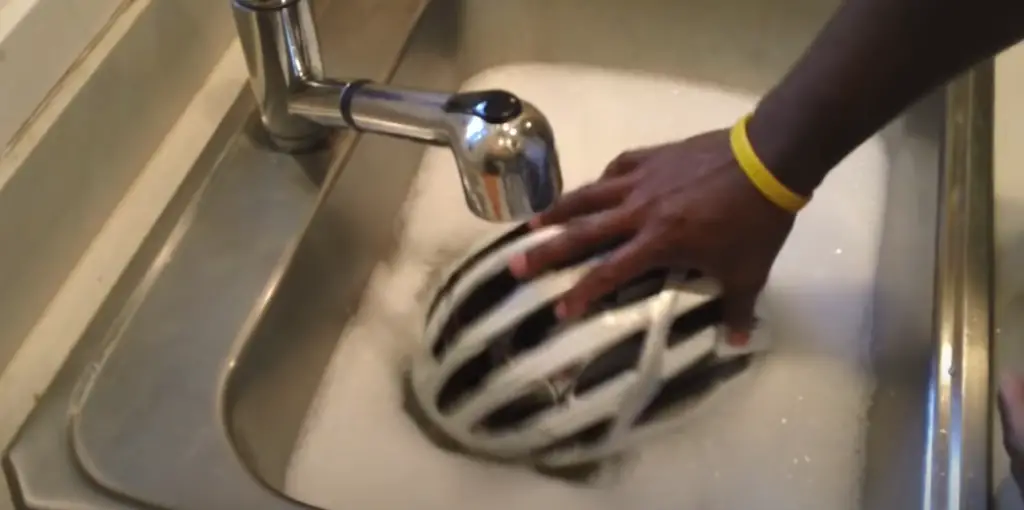
What are the main types of helmet straps?
The main types of helmet straps are buckle, quick-release, and ratchet. Buckle straps are the traditional type and they use a buckle closure to secure the strap around your chin. Quick-release straps are a more modern design that uses a sliding mechanism to open and close the strap. Ratchet straps use an adjustable wheel system that you can turn to tighten or loosen the fit of your helmet.
All three types of straps provide good security for your head when riding, but some riders find one type more comfortable than another. It’s important to try on helmets with different types of straps before buying so you can choose which one works best for you.
It’s also important to make sure that whichever style of helmet strap you choose is properly adjusted and secure before you ride. Whichever type of helmet strap you choose, always check that it’s snugly pulled against your chin, so it won’t come undone while you’re riding. Finally, be sure to replace any straps if they become worn or frayed – this will ensure maximum safety on the road [1].
Why It Is Important To Clean Helmet Straps?
Helmet straps are essential components of a helmet that keep the headgear securely in place. It is important to clean helmet straps regularly because dirt, grime, and sweat can build up over time and weaken the strap material. This can lead to breakage or looseness which can cause the helmet to become loose during use and increase the risk of injury. Additionally, bacteria and mold can form on unclean straps leading to an unpleasant smell as well as skin irritation from contact with these organisms.
Regularly cleaning your helmet straps will ensure they remain strong and secure for optimal protection. The best way to clean helmet straps is by using mild soap and water followed by thorough rinsing with clean water. It’s also important to use a soft cloth or brush to gently remove dirt and sweat build-up. Allow the straps to air dry completely before reattaching them to the helmet. Additionally, you can also use specialized cleaning products specifically designed for helmets which may provide better protection against bacteria, mold, and unpleasant odors.
Keeping your helmet straps clean is important for not only keeping them in good working order but also helping reduce the risk of skin irritation and other health concerns associated with unclean straps. By following these simple steps regularly, you can ensure that your helmet stays secure and in good condition for years to come.
Tips on How to Clean Bike Helmet Straps
Remove the padding
The first step in cleaning your bike helmet straps is to remove the padding. This will allow for a much deeper clean, as the dirt and grime can be easily wiped away with a damp cloth or sponge. You should also take this opportunity to check the condition of your helmet’s padding, as it may need to be replaced if it’s worn or damaged.
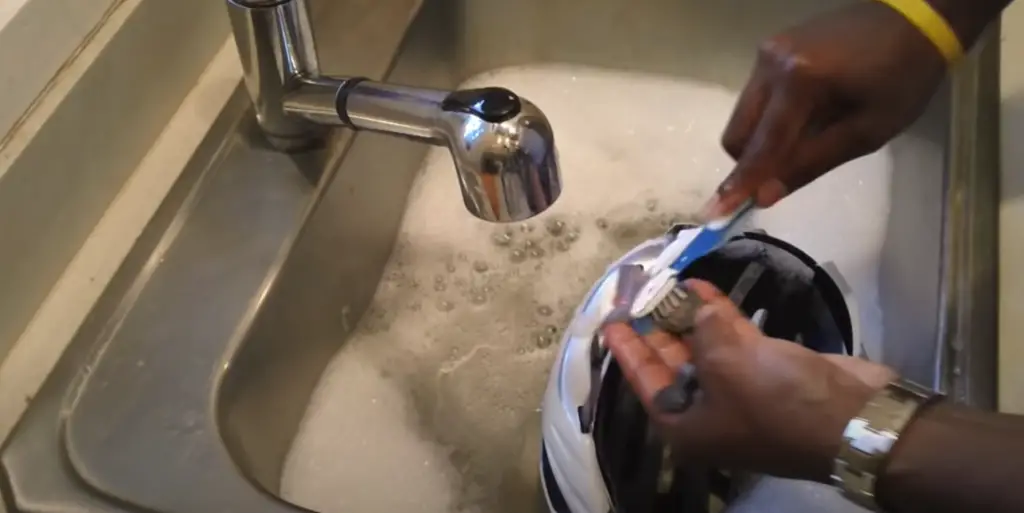
Bend and brush the straps
Using a soft brush, gently bend and brush the straps of your helmet. This will help to remove any dirt or grime that is stuck in the material of the straps. Be careful not to pull too hard or you may damage the material.
Wet and soak the straps
Once the straps are bent and brushed, it’s time to wet and soak them. Using a damp cloth or sponge with warm water, gently clean the straps of your helmet. Make sure the sponge is not too wet; otherwise, you may risk soaking the padding inside.
Rinse the straps
Once the straps are clean, it’s important to rinse them off with water. This will help remove any soap residue that may be left behind. You can also use a mild detergent in the rinse if you feel your helmet needs a deeper clean.
Dry and condition the straps
Once you have rinsed off the straps of your helmet, it’s time to dry them off. Using a soft towel, gently pat down and absorb as much excess moisture as possible. After drying, apply a small amount of leather conditioner or gel to help maintain the quality of your helmet’s straps over time. This will keep the material supple and help prevent cracking and wear-and-tear damage.
Spray with an antibacterial
To finish off the cleaning process, spray your helmet straps with an antibacterial solution. This will help keep them clean and free of bacteria for longer. It’s also a good idea to spray down the padding of your helmet too, as this will help prevent the growth of mold and mildew over time.
Replace worn padding
Finally, if you find that the padding of your helmet is worn or damaged, it’s important to replace it. This will help ensure the safety of your head while riding and reduce the risk of injury in case of an accident. Be sure to read the instructions on how to properly install new padding before doing so [2].
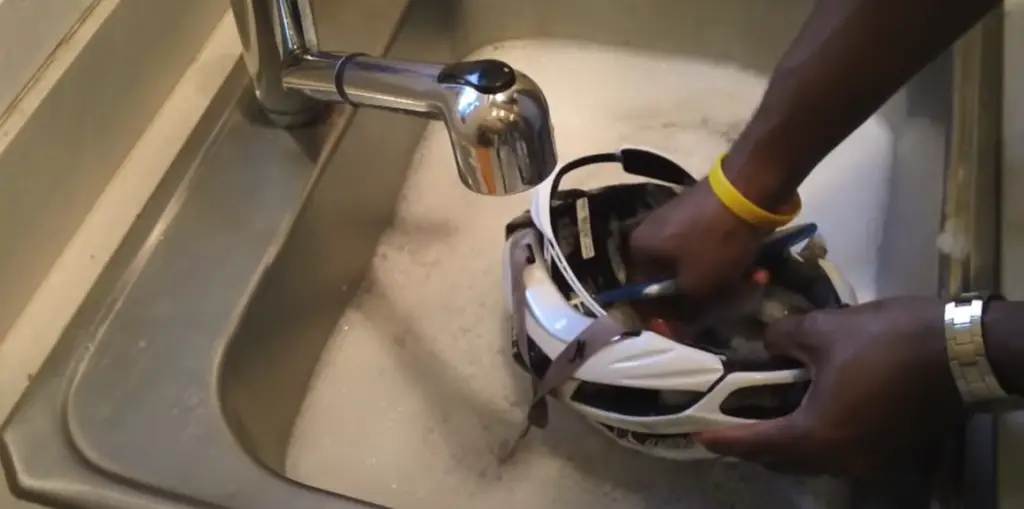
What You Should Avoid When Cleaning Your Bike Helmet Straps?
When cleaning your bike helmet straps, there are a few things that you should avoid. First of all, never use any type of abrasive cleaner or scrubbing pad to clean the straps. This can easily damage the material and make it more difficult for your helmet to secure properly around your head.
Finally, keep in mind that harsh chemicals like bleach should never be used on your helmet straps either. They can weaken the structure and hurt the overall quality of your helmet.
Overall, the best way to clean and maintain your bike helmet straps is to use a gentle cleaning solution and avoid any harsh chemicals or abrasives, which could potentially damage them. Taking care of your straps will help ensure that they remain secure and in good condition while you’re out riding.
How to Store Bike Helmets?
Once you have found the perfect helmet for your bike ride, it is important to take extra precautions when storing them. Here are some tips on how to store your bike helmets:
- Don’t Leave Helmets in Direct Sunlight – Ultraviolet rays can weaken the plastic and damage the foam inside a helmet. If you have to leave your helmet out in the sun, make sure that you cover it with a cloth or put it in a box.
- Avoid Extreme Temperatures – The extreme heat of summer or cold of winter can cause materials like straps and padding to become brittle over time which could affect their quality and safety while riding particularly if they suffer from temperature shock during sudden changes in weather conditions.
- Keep Helmets Clean and Dry – Make sure to wipe down the helmet after use with a damp cloth and keep it in a cool, dry place when not in use. Over time dirt, oils, and sweat can damage the helmet’s protective materials, reducing its effectiveness.
- Hang Helmets or Store Flat – To prevent warping or misshaping of your helmet’s foam liner, store them either hanging or flat on a shelf at room temperature. If possible hang them from the straps instead of their shells to avoid putting pressure on the weaker parts that are designed for ventilation.
- Be Careful When Handling Your Helmet – Taking care of how you handle your helmet is just as important as the way you store it. Always pick up your helmet from its straps and avoid dropping it or throwing it around to keep it in good condition for years to come.
Following these tips will help ensure that your helmet is safe, secure, and ready for use when you need it. Whether you’re an avid cyclist or casual rider, taking the time to properly store and care for your bike helmets can extend their life and provide you with extra protection on all of your rides.
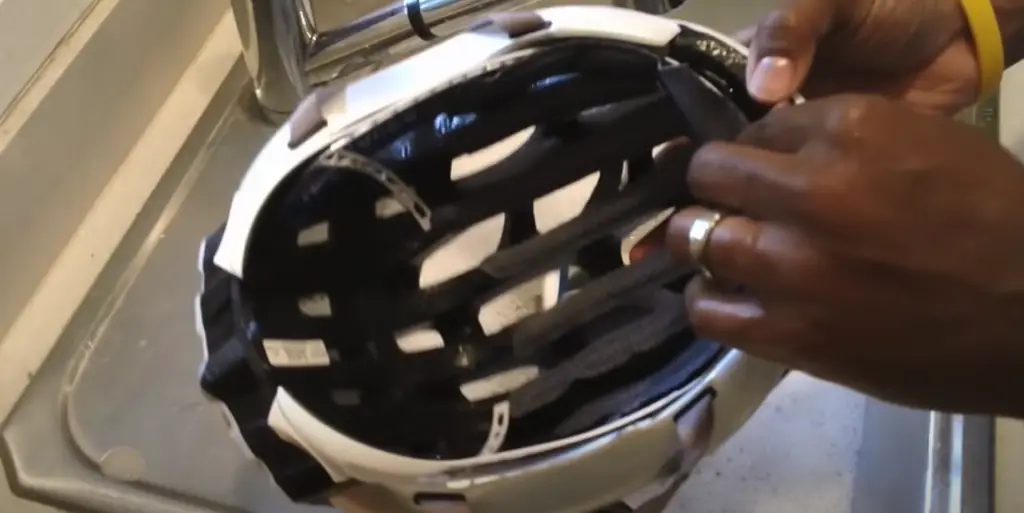
FAQ
How do you clean a smelly bike helmet?
First, remove any surface dirt with a wet cloth and mild detergent. Allow the helmet to air-dry before proceeding. To reduce odor, sprinkle baking soda on the interior foam liner and allow it to sit for several hours. Gently brush away the baking soda with a soft-bristled brush and wipe down the liner with a damp cloth. You may also opt to use an odor absorber such as activated charcoal or baking soda in an enclosed container inside the helmet overnight for more effective results. Finally, apply a protective cleaner or polish if desired. Be sure to follow the manufacturer’s instructions for safe cleaning practices and materials compatibility.
Where can I buy bike parts online?
You can buy bike parts online from a variety of retailers. Popular outlets include Amazon, Chain Reaction Cycles, and JensonUSA. You can also source bike components from vendors on eBay or directly from the manufacturer’s website. Many websites offer discounts or free shipping when you buy in bulk or meet certain purchase requirements. Be sure to compare prices and read reviews before making your final selection.
How long should I ride my bike for each session?
The amount of time you spend riding your bike depends on several factors such as your skill level, fitness, and desired intensity. For beginners, it is recommended that you start with shorter rides (30 minutes to an hour) and gradually work up to longer sessions over time. Experienced cyclists may be able to maintain intense rides of two hours or more. It is important to listen to your body and adjust accordingly.
What types of bike straps are available?
There are several types of bike straps available for carrying items. Pannier racks and baskets can be mounted to your bike’s frame for transporting heavier loads. There are also bungee cords, webbing straps, and elastic cords that are designed for lighter items such as water bottles or backpacks. For extreme conditions, there are heavy-duty straps made from metal or plastic that can secure larger cargo securely.
What safety precautions should I take while riding?
It is important to wear a properly fitting helmet at all times while riding your bike. Additionally, you should make sure you obey all traffic laws, use appropriate lighting and reflectors in low-light conditions, use hand signals when turning or stopping, and pay attention to your surroundings. It is also important to wear bright and reflective clothing, check your bike before every ride, carry a repair kit in case of emergency, and stay hydrated while riding.
Can you wash helmet liners?
Yes, many helmet liners are machine-washable. Be sure to check the manufacturer’s instructions before washing as some require spot cleaning or hand washing only. If your liner is machine-washable, use mild detergent and cold water on a gentle cycle. Allow it to air dry after washing for best results. Do not put the helmet in the dryer as this could damage the foam lining.
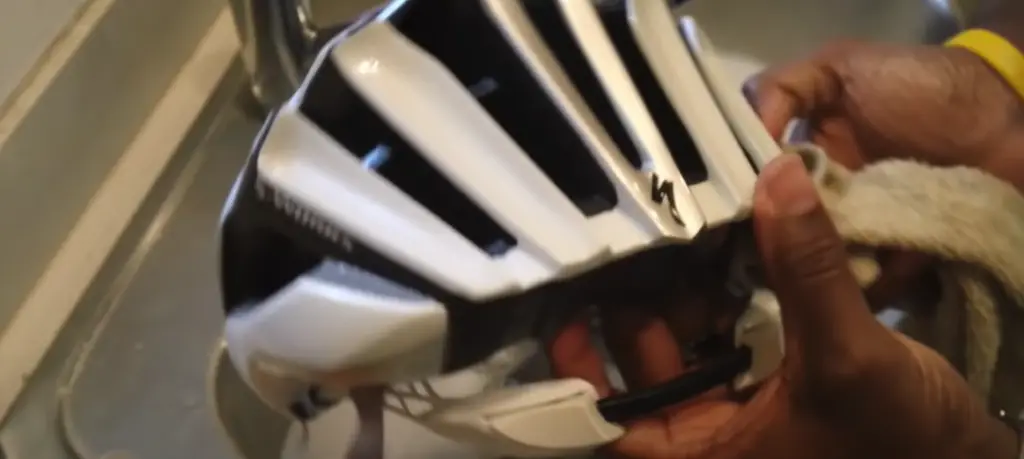
How do you clean helmet padding?
Gently remove any surface dirt with a damp cloth and mild detergent. Allow the helmet padding to air dry before proceeding. To reduce odor, sprinkle baking soda on the interior foam lining and let it sit for several hours. Gently brush away the baking soda with a soft-bristled brush and wipe down the area with a damp cloth. You can also opt to use an odor absorber such as activated charcoal or baking soda in an enclosed container inside the helmet overnight for more effective results. Finally, apply a protective cleaner or polish if desired. Be sure to follow the manufacturer’s instructions for safe cleaning practices and materials compatibility.
What should I clean my bike straps with?
Bike straps should be cleaned with a damp cloth and mild detergent. Gently scrub away any surface dirt before rinsing with clean water. Allow the straps to air dry before using them again. For more effective cleaning, use an all-purpose cleaner or polish designed for bike components if desired. Be sure to follow the manufacturer’s instructions for safe cleaning practices and materials compatibility.
Can I machine wash my helmet straps?
No, machine washing helmet straps is not recommended as the heat and friction could damage the material. Instead, it is best to clean your straps with a damp cloth and mild detergent. Gently scrub away any surface dirt before rinsing with clean water. Allow the straps to air dry before using them again. For more effective cleaning, use an all-purpose cleaner or polish designed for bike components if desired. Be sure to follow the manufacturer’s instructions for safe cleaning practices and materials compatibility.
Do I need to clean a new helmet strap?
Yes, a new helmet strap should be cleaned before use. Gently remove any surface dirt with a damp cloth and mild detergent. Allow the strap to air dry before proceeding. To reduce odor, sprinkle baking soda on the interior foam lining and let it sit for several hours. Gently brush away the baking soda with a soft-bristled brush and wipe down the area with a damp cloth. You can also opt to use an odor absorber such as activated charcoal or baking soda in an enclosed container inside the helmet overnight for more effective results. Finally, apply a protective cleaner or polish if desired. Be sure to follow the manufacturer’s instructions for safe cleaning practices and materials compatibility.
How often should I clean my helmet strap?
It is recommended that you clean your helmet strap at least once every three months, or more often if needed. It is important to remove any dirt, sweat, and other debris that could accumulate on the straps. Gently remove any surface dirt with a damp cloth and mild detergent. Allow the strap to air dry before proceeding. To reduce odor, sprinkle baking soda on the interior foam lining and let it sit for several hours.
What is the best way to dry a helmet strap after cleaning?
The best way to dry a helmet strap after cleaning is to allow it to air dry. Do not put the helmet in the dryer as this could damage the foam lining and straps. After cleaning, gently wipe down the strap with a clean cloth, then set it out in an area with good air circulation to ensure that it dries completely. Once fully dried, apply a protective cleaner or polish if desired. Be sure to follow the manufacturer’s instructions for safe cleaning practices and materials compatibility.
Useful Video: How To Clean Your Bike Helmet
Conclusion
Cleaning bike helmet straps is an important part of bike safety. By taking the time to remove dirt, grime, and sweat from your helmet straps, you can ensure that they remain secure when you ride and protect your head in case of a crash. Furthermore, properly cared-for straps will last for years, providing ongoing protection for all your rides. With a few simple steps and some basic supplies, anyone can easily keep their bike helmet straps clean and secure.
References:
- https://www.whitedogbikes.com/whitedogblog/different-motorbike-helmet-buckles/
- https://gearforventure.com/how-to-clean-bike-helmet-straps/

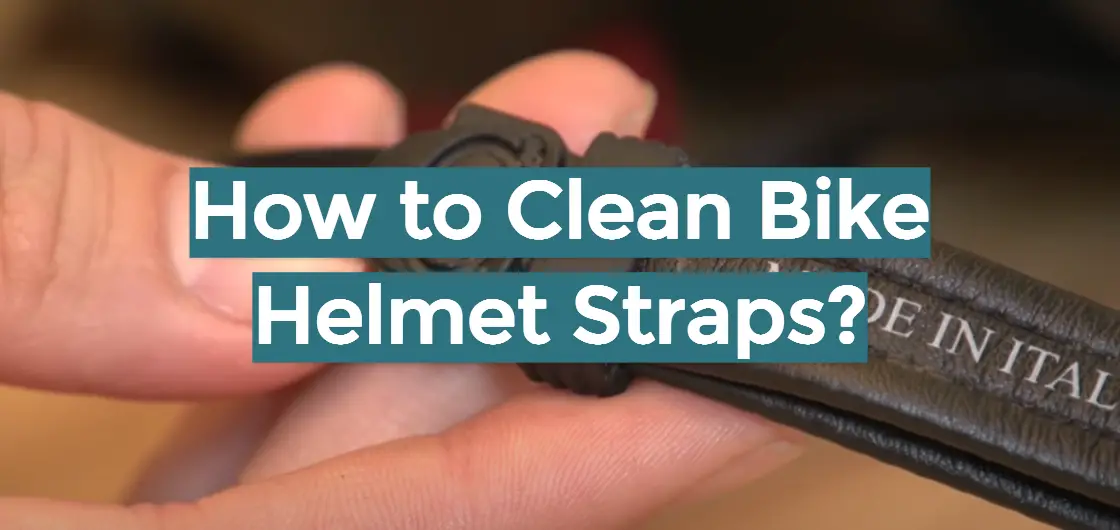
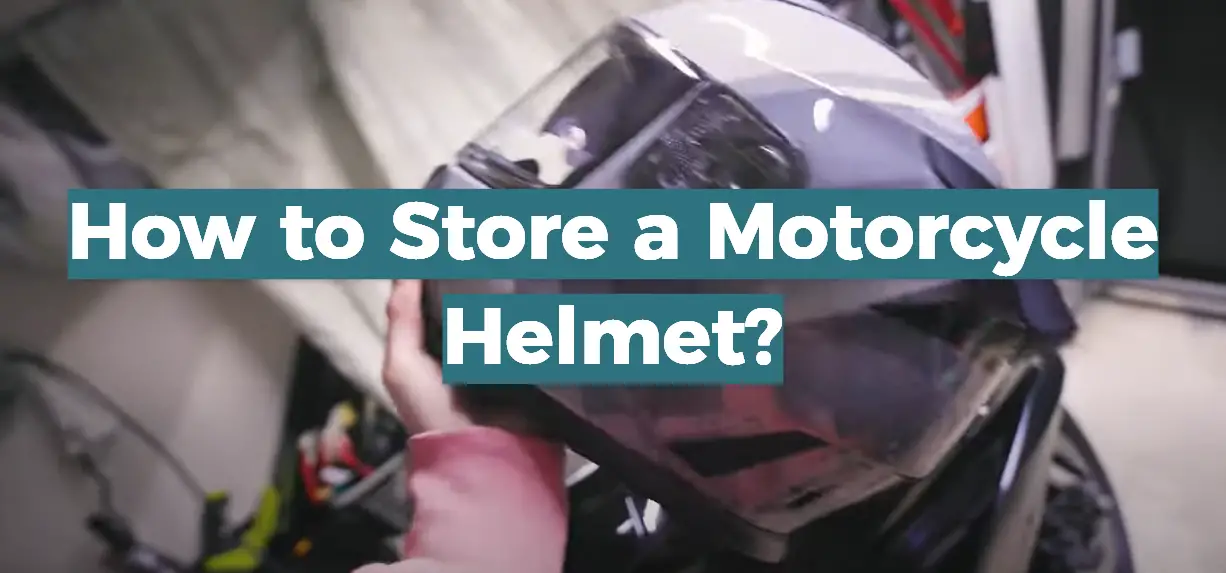
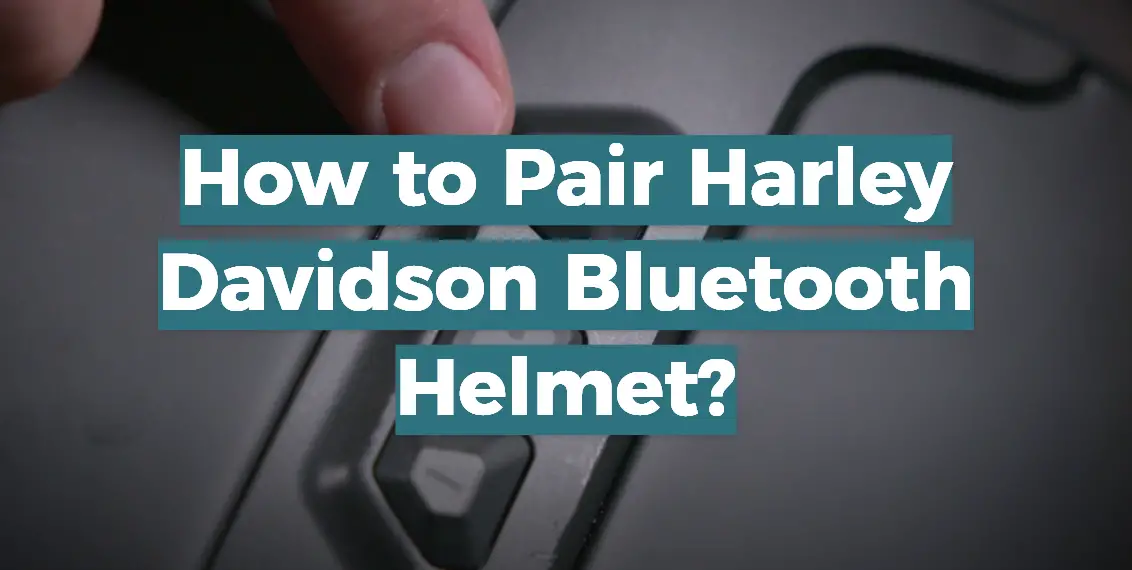
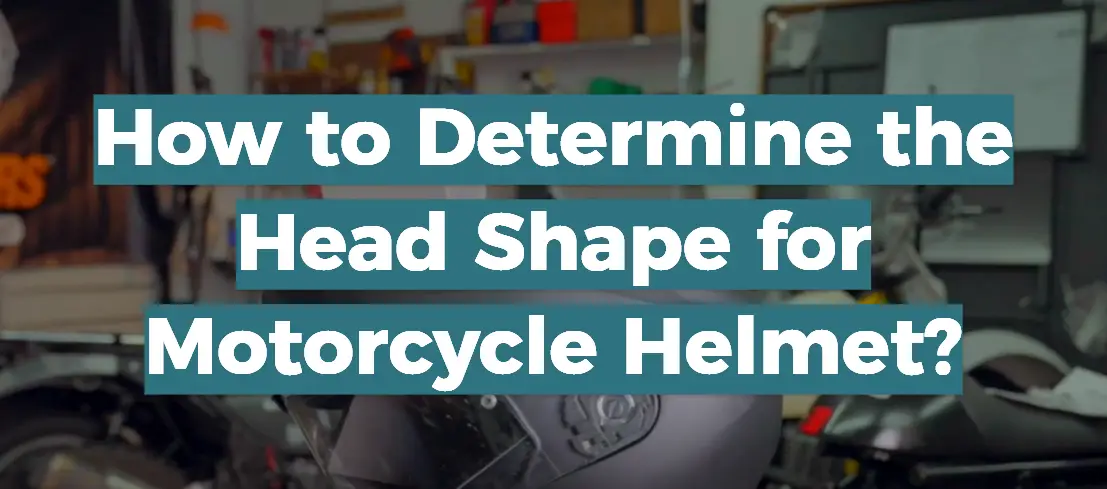

Leave a Reply